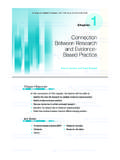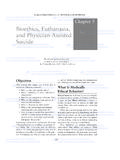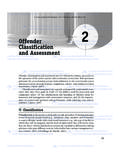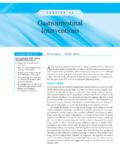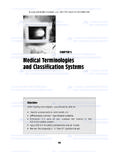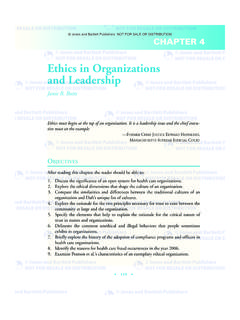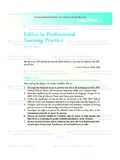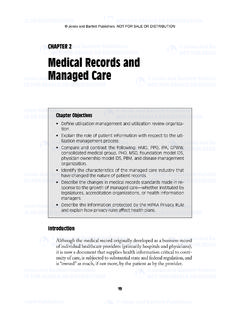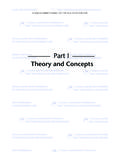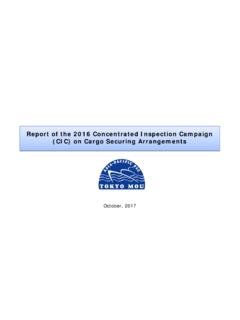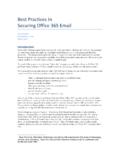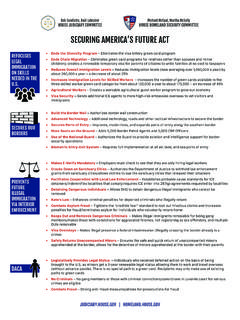Transcription of Securing TCP/IP
1 Chapple06 10/12/04 9:21 AM Page 135. CHAPTER 6. Securing TCP/IP . After reading this chapter, you will be able to: Explain the role that the Transmission Control Protocol (TCP) and the Internet Protocol (IP) play in computer networking Understand how security concepts integrate into the OSI network- ing models Identify the major components of the TCP/IP protocol suite and explain how each is used in networking Decipher the contents of a TCP/IP packet and describe the types of modifications involved in malformed packet attacks Describe the enhancements provided by adding IPSec security to a network Identify the various security protocols used to enhance Web commu- nications and choose the protocol appropriate for a given situation chapple06 10/12/04 9:21 AM Page 136.
2 136 CHAPTER 6 Securing TCP/IP . The vast majority of computer networks, including the Internet itself, are dependent upon a set of protocols known as the TCP/IP suite. The two core components of this suite, the Transmission Control Protocol (TCP) and the Internet Protocol (IP), control the formatting and routing of data as it flows from point to point across the network. Although a large number of other net- work protocols are in use today (such as Novell's Internetwork Packet Exchange/Sequenced Packet Exchange [IPX/SPX] and Apple's AppleTalk), the discussion in this book is limited to these popular protocols because they are the language of the Internet and the source of many security vulnerabilities.
3 Introduction to Transmission Control Protocol/. Internet Protocol ( TCP/IP ). Although the TCP/IP suite has been modified and enhanced over the years, the core set of protocols date back to the earliest days of the Internet, when it was a private network interconnecting several large government research sites. These protocols completely describe the ways that devices communicate on TCP/IP networks, ranging all the way from the way individual chunks of data (known as packets) are formatted to the details of how those packets are routed through vari- ous networks to their final destinations.
4 In this section, we introduce the basic concepts behind the TCP/IP suite. You'll first learn about the four protocols that form the basic building blocks of TCP/IP . Next, you'll learn about how the Open Systems Inter- connection (OSI) reference model governs the design of TCP/IP and other networking protocols. Finally, you'll learn how to examine the guts of a packet and actually interpret those electrical impulses as they transit a network. TCP/IP Protocols Four main protocols form the core of TCP/IP : the Internet Protocol (IP), the Transmission Control Protocol (TCP), the User Datagram Protocol (UDP), and the Internet Control Message Protocol (ICMP).
5 These proto- cols are essential components that must be supported by every device that communicates on a TCP/IP network. Each serves a distinct purpose and is worthy of further discussion. chapple06 10/12/04 9:21 AM Page 137. Internet Protocol ( TCP/IP ) 137. Internet Protocol The Internet Protocol (IP) is a network protocol that provides essential NOTE. routing functions for all packets transiting a TCP/IP network. By this point in your computer science education, you're probably familiar with the con- Throughout this section, cept of how IP addresses uniquely identify network destinations.
6 Each sys- you'll see individual units of tem connected to the Internet and available for public use is assigned an IP data referred to as either IP. address that allows other systems to locate it on the global network. (There datagrams or TCP packets. are some exceptions that you'll learn about later in this book. Sometimes Many people use these multiple systems share a single IP address for security and/or efficiency rea- terms interchangeably, but sons using a service known as Network Address Translation [NAT].) that is not technically cor- rect. IP and UDP work with The Internet Protocol provides networking devices (workstations, servers, datagrams, whereas TCP.)
7 Routers, switches, and so on) with guidance on how to handle incoming processes packets (some- packets. Each IP datagram bears a source IP address that identifies the sender times referred to as seg- and a destination IP address that identifies the recipient. When a device ments). receives an IP datagram, it first checks to see whether the destination IP. address is an IP address assigned to the local machine. If it is, it processes the datagram locally. If not, it determines the proper place to forward the packet (the next hop ) to help it along toward its ultimate destination. IP is respon- NOTE.
8 Sible for ensuring that systems can identify the next hop in an efficient man- The material on IP routing ner so that all network traffic eventually reaches its ultimate destination. presented in this book is intended to be a brief It's important to note that the IP protocol itself does not provide any relia- refresher only. We have bility guarantees; that is, IP provides no assurance to users that a packet will assumed that students reach its ultimate destination. This is the responsibility of other protocols have a familiarity with within the TCP/IP suite. basic networking,routing, Besides addressing, the other main responsibility of IP is datagram frag- addressing, and network mentation.
9 As a datagram travels from source to destination, it may pass devices. If this is not the through several intermediate networks with varying topologies. Each of case, please take the time those networks may specify a different maximum datagram size. Because to review this material in the originating machine has no way of telling what networks a datagram a networking text. will pass through, let alone the maximum datagram size on those networks, IP must accommodate those limits in a method transparent to the end users. This is where fragmentation comes into play. If a datagram reaching a network exceeds the maximum length permissible for that network, IP.
10 Breaks the datagram up into two or more fragments, each of which com- plies with the maximum length for that network. Each fragment is labeled chapple06 10/12/04 9:21 AM Page 138. 138 CHAPTER 6 Securing TCP/IP . Length=425, Offset=0. Figure Original datagram Length=425, Offset=0. Len=100 Len=100 Len=100 Len=100 Len=25. Figure Offset=0 Offset=100 Offset=200 Offset=300 Off=400. Fragmented datagram with a length and an offset (both specified in bytes). The length simply specifies the total number of bytes in the fragment. The offset specifies the location of the first byte of the fragment in the original datagram.
